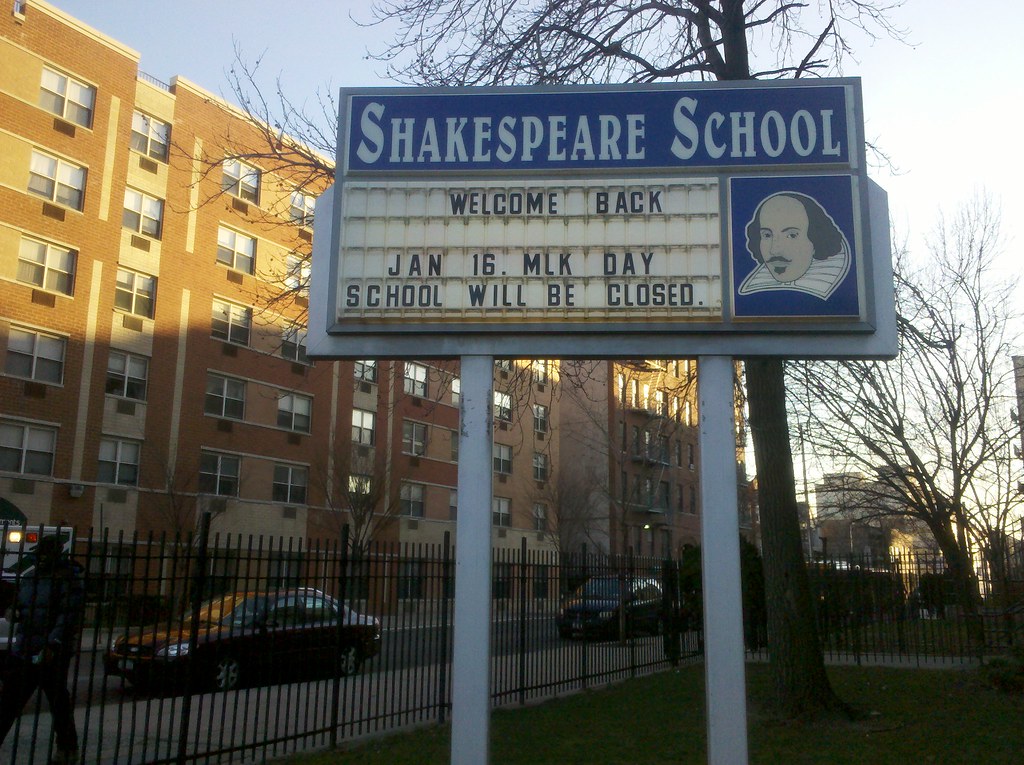
On Shakespeare Avenue. More from John McNamara, this time from his book McNamara's Old Bronx:
The watchman on the construction site of the Yankee Stadium was a storehouse of Highbridgeville history. After fetching a can of beer for him — a custom known as "rushing the growler" — this writer would be rewarded with folklore from that colorful West Bronx community.
One such tale concerned the naming of Shakespeare Avenue. The watchman — whose name has been long forgotten — was born in Highbridgeville shortly after the Civil War, and, being raised in that predominately Irish settlement, had a brogue as genuine as any son of the Emerald Isle itself. He started working as a stable boy and groom in the Marcher estate, and he recalled the fine view of the Harlem River, the extensive lawns and gardens, the carriage horses and valuable spaniels, and the Marcher mansion.
The eastern slope of the estate was a steep rocky set of cliffs, accounting for its name of Rockycliff while the western end was noted for its Shakespearean Garden. This was a formal garden containing many of the flowers mentioned in Shakespeare's plays, and embellished by marble busts of the Bard himself, and some of his creations, such as Puck, Romeo and Juliet, Hamlet, Shylock and Portia. Other statues were placed in arbors and along the footpaths. Rebecca Marcher, averred the old watchman, pursued the theme by naming her horses and dogs Macbeth, Pyramus and Thisbe, and Falstaff.
When the estate finally succumbed to an expanding city, the street that was surveyed and cut through the property was named Marcher Avenue. In 1912, however, its name was changed to Shakespeare Avenue, recalling the widow's beloved garden.



To be or not to be